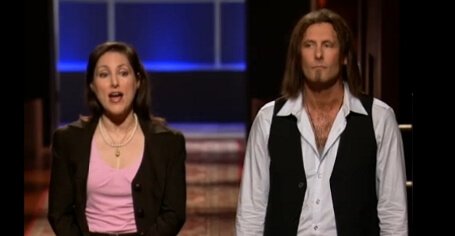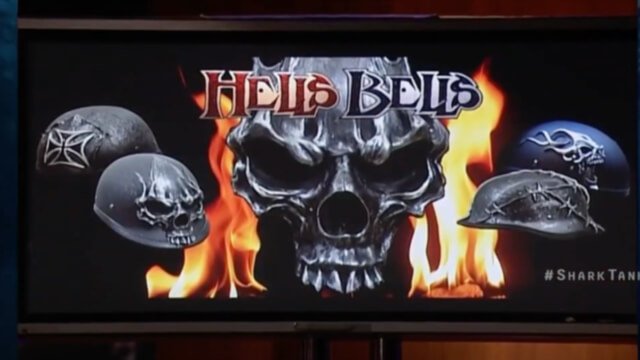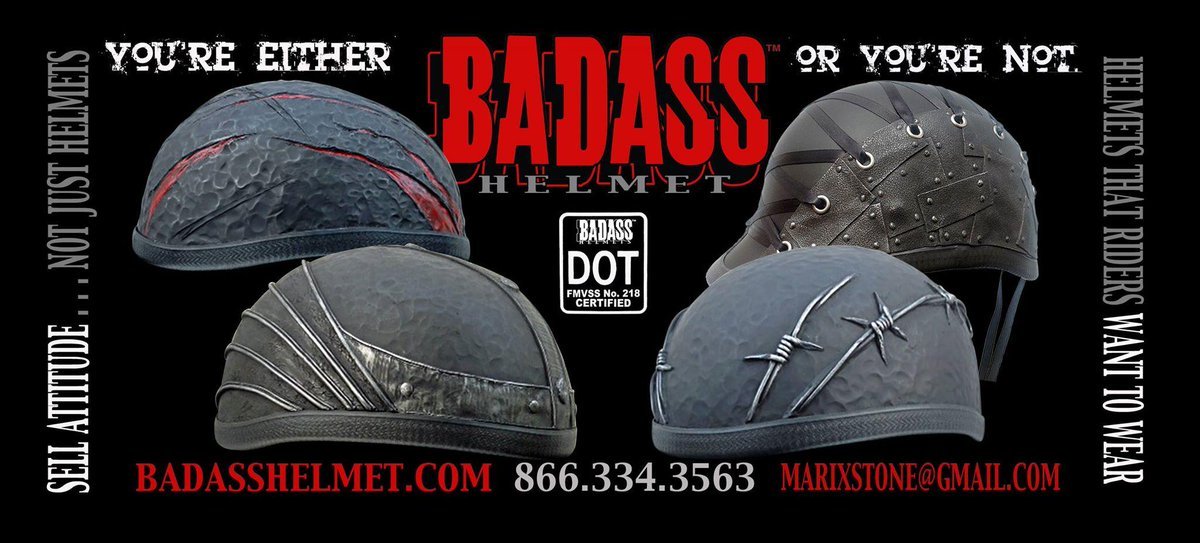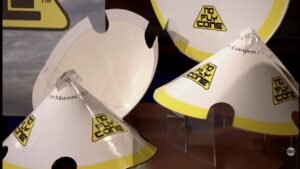Most people see a Shark Tank handshake and think, Boom. Instant millions. That’s not how the road really runs. Case in point: Hell’s Bells Customs. They showed up on Shark Tank, locked down a deal on camera, then walked back into the grind—no funding, just a massive surge and the same hustle. The story goes way deeper than five minutes of TV fame. So let’s cut through the clichés and get to what matters for real entrepreneurs.
The Fast Track: What Is Hell’s Bells Customs?
You’ve seen cookie-cutter motorcycle helmets, right? Hell’s Bells Customs (also known in the wild as Hells Bells Helmets and now BADASS Helmet) decided to flip the script. They build 3D-sculpted, DOT-certified helmets—gritty, street-art on your skull. These aren’t stickers or basic airbrush jobs. I’m talking custom, deep-carved, functional headgear, born for road warriors who want to stand out.
Why do people care? They’re the only ones with a patent to do this, and unlike most custom products, these lids meet the safety standards that actually protect your life. The sub-headline: unique tech, real safety, legit style.
Meet the Founders: Who Built This?
Every good hustle starts with a founder who’s a little obsessed. Meet Marix Stone—a biker and raw sculptor, who started carving wild art onto his own gear in his garage. Not some Ivy League MBA, just a hands-on craftsman sick of boring helmets. He brought in Dr. Nancy Tanchel, a sharp CEO with brains for business and a knack for growth.
The split is classic: artist plus operator. Marix builds; Nancy sells. Together, they took Stone’s street tinkering and turned it into something scalable—without losing the rebel edge. If you’ve ever tried to scale a niche product, you know how tough that is.

Shark Tank Spotlight: How Did the Pitch Go Down?
Season 1, Episode 11. Pre-Shark Tank fever. Marix and Nancy walk onto the set, eyes on the clock. They ask the Sharks for $500,000 in exchange for 20% equity. That’s a $2.5 million valuation, big money for handmade art with sales at $300,000 a year—and a wild 50% margin.
Here’s how the pitch played out: Marix starts shaky (hey, those cameras hit different), but Nancy brings the numbers. They’ve sold a solid amount. They’ve got a patent. But can they mass-produce without losing the soul? That’s the question every investor’s thinking.
Most Sharks pass. Motorcycle culture just isn’t their game. But then Daymond John, seasoned brand-builder and licensing king, starts sniffing for angles.
Did a Shark Bite? The Deal and What Happened Next
Daymond makes his move. He doesn’t offer the $500K for 20%. Instead, he wants 50% for that half-million. That’s a much steeper price, and you can see the hesitation.
Marix isn’t sure. He’s worried about licensing—once it’s out of your hands, quality can nosedive. I’ve seen founders make the mistake of giving up too much control and then watch their brand fall apart. But they agree on-air, likely pressured by the moment.
Here’s where it gets real: after the cameras cut, the deal tanks. Big disagreements—mainly about keeping quality tight versus mass-producing junk for the sake of a quick buck. No shame in walking when your gut screams protect your brand. Daymond doesn’t close. And honestly, I respect that decision.
Money Moves: Revenue, Valuation, and Net Worth
A lot of founders inflate their numbers for Shark Tank. These two brought real numbers: $300,000 revenue before Shark Tank, and a fat 50% margin. Fast forward to now—BADASS Helmet (the Hell’s Bells rebrand) is pulling in around $12 million per year and still thriving.
Net worth isn’t public, but with a sales multiple, we’re looking at a brand in the multi-millions. That’s not vapor—it’s the result of a killer patent, unique offering, and branding done right. For you side hustlers, do the quick math: high price point + loyal niche = big profit potential, if you keep quality high and marketing sharp.

What Sets Hell’s Bells Apart?
So why didn’t some copycat undercut them? One word: patents. Their method for creating 3D designs into DOT-certified helmets is locked down. No license, no knockoff.
Next, their biker-market focus. They didn’t chase every customer—they built for a crew that actually values custom work and is willing to pay for it. Think Harley guys, custom chopper fans, and serious motorcycle diehards.
Bonus move: licensing. After Shark Tank, they started licensing out the designs carefully (but smartly), and they became the go-to for Sons of Anarchy. When you get Hollywood to wear your gear, your street cred—and organic marketing—blows up. They didn’t need every market, they just owned the right one.
How the Business Evolved After Shark Tank
A lot of brands fade after the Shark Tank rush. Hell’s Bells pivoted. They went from custom-only to a new brand—BADASS Helmet—and broadened their range. No Shark money, but they rode the free PR wave harder than most. They hired new fabricators, tooled up, and pushed more product through their Philly workshop.
The Sons of Anarchy deal was a game-changer. Suddenly, they weren’t just selling to bikers; they were the face of cool in motorcycle culture. That’s what separates survivors from Shark Tank one-hit wonders: they kept finding angles even after the TV high faded.
Where Are They Now? Current Status and the Road Ahead
BADASS Helmet is alive and kicking. They’re still selling DOT-certified, 3D-sculpted helmets online and through dealers. The founders? Still calling the shots—Marix Stone and Dr. Nancy Tanchel didn’t cash out and vanish.
The brand is tighter and broader, offering custom gas tanks and fenders, plus rare helmet art you won’t find anywhere else. Annual revenue is holding at about $12 million. They remain fiercely independent, still using their patented process, and pushing deeper into the motorcycle gear niche.
If you look them up, the reviews check out. Loyal customers, cool designs, and a company that never lost its original edge. No corporate sell-out or watered-down quality here.
Final Take: What Can Entrepreneurs Learn?
So what’s the street-level lesson here, beyond Shark Tank is just the start? For starters, know your number and stick to your gut. Stone and Tanchel could have whiffed on quality for a quick cash infusion, but they didn’t. Control matters more than a TV handshake.
Second, branding always wins. From Hell’s Bells to BADASS Helmet, they nailed their story and product-market fit. It wasn’t about being everywhere. It was about being the only one that mattered to the right crowd.
Third, the afterglow is real—but it’s on you to hustle hard when the hot lights cool off. Shark Tank exposure can open doors, but execution is still everything. They’re proof that walking away from a deal (even with Daymond John) doesn’t kill your shot.
Lastly, listen to your market. They didn’t try to please non-riders. They leaned into what bikers wanted, crushed the custom helmet game, and scaled up only when it made sense.
To every founder chasing Shark Tank: the real deal starts after the show.
FAQs: Hell’s Bells Customs Shark Tank
1. Is Hell’s Bells Customs still in business?
Yes, they’ve rebranded as BADASS Helmet and are going strong.
2. Did the Shark Tank deal with Daymond John ever close?
No. They made the deal on-air, but it fell apart during negotiations.
3. What makes Hell’s Bells helmets unique?
Their patented 3D-sculpted, DOT-certified helmet process—nobody else does it like this.
4. What is BADASS Helmet’s estimated annual revenue?
Around $12 million as of the latest public reports.
5. Who runs BADASS Helmet today?
Marix Stone and Dr. Nancy Tanchel are still in charge and pushing the vision forward.
6. Did appearing on Shark Tank help the business?
100%. They got nationwide visibility, a credibility boost, and the chance to close bigger deals.
7. Can you still buy their custom helmets?
Yes, online and through select motorcycle dealers.
8. Did Sons of Anarchy really use BADASS Helmet designs?
Yes, the show featured their helmets and gave them the ultimate biker endorsement.
Cutting Through the Hype
Forget the fantasy: Shark Tank can give you rocket fuel, but the climb is always on you. Hell’s Bells Customs (now BADASS Helmet) won by holding their ground, betting on their own branding, and taking a niche product nationwide—no shortcut, just grind and guts.
If you want more stories where the real business scars show, check out SharkWorth for the cold, hard numbers and founder playbooks. Because on this street, the only thing guaranteed is the work you put in after the pitch.










